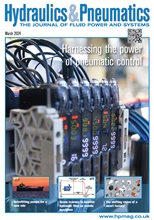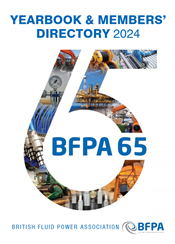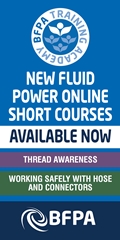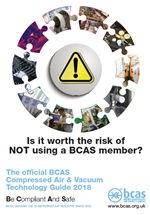How much do air leaks really cost?

Besides the energy waste, these leaks bring other issues: as leaks on the printing machines will bring down the system pressure, this will compromise the printing quality. Therefore, finding and repairing leaks in the printing industry is not just a matter of energy savings, but also of assuring the final product quality.
Costly compressed air and argon/nitrogen leaks found at pharmaceutical company
Pharma uses a lot of compressed air, as well as special gas, which means leaks can quickly become a huge source of energy waste - this was highlighted when UE Systems surveyed a pharmaceutical plant using the UltraView. During the demonstration the company was able to pinpoint and report 29 compressed air leaks in about two hours of survey.
The total cost for these leaks is estimated at a costly £28,313 per year. This includes some major leaks, including one huge leak which has been undetected so far and costing the company £5809. The UltraView was able to easily pinpoint it even at a five-metre distance.
Besides compressed air, UE Systems could also detect some very expensive argon and nitrogen leaks. Special or innate gas leaks can become quite expensive, as the price for these is usually 3 or 4 times more expensive than compressed air.
In the video it can be seen how the UltraView could find an argon leak at a tank. This is a leak losing 9 litres per minute of argon, meaning that, if it were left undetected, the tank would be empty in about 3 to 4 days.
Food packaging plant: detecting compressed air, vacuum and vent leaks
At a food packaging plant UE Systems did a quick survey using its UltraView camera. Packaging facilities normally rely heavily on compressed air, so it was no surprise that the company was able to quickly find 22 leaks amounting to almost £13,000, including two leaks at hard-to-reach locations which it could easily detect even at a five-metre distance. These would be much more difficult to pinpoint using traditional listen-only ultrasound instruments.
On top of that, the UltraView could also detect three vacuum leaks and one leak in the ventilation system, as can be seen in the video. Vacuum leaks are a big issue in many industries, as they are very hard to detect and can quickly lead to product quality loss and increase in production time. Also, interesting to note that leak at the ventilation system, which is not a typical application for the UltraView but was very important at this facility, since the maintenance team wants to assure the vents are completely sealed, otherwise dangerous gas might not be expelled from the facility as they should.
In conclusion, the true cost of air leaks in industrial facilities cannot be overstated, both in terms of energy waste and financial implications. With the average leak costing around £1200 per year, the cumulative impact on operational expenses becomes evident when considering the multitude of leaks present in any given facility.
As energy prices continue to fluctuate, the urgency for detecting and repairing compressed air leaks has never been more pronounced. Given that approximately 10% of an industrial facility’s energy consumption is attributed to compressed air, and with the average leak rate at 30%, addressing these leaks is paramount for reducing overall energy waste in the industry.
The adoption of advanced ultrasound inspection instruments, particularly ultrasound cameras, has revolutionised the efficiency of leak detection. These instruments not only identify leaks with precision but also provide real-time visualisations, transforming what was once a time-consuming task into a swift and effortless process.
In light of the above findings, investing in ultrasound cameras for leak detection emerges not only as a cost-effective measure but as a strategic imperative for industrial facilities aiming to enhance energy efficiency, minimise financial losses, and uphold product quality standards
https://twitter.com/UE_Systems
https://www.linkedin.com/company/ue-systems/
-
Smart Manufacturing & Engineering Week
05 - 06 June, 2024
NEC, Birmingham -
HILLHEAD 2024
25 June, 2024, 9:00 - 27 June, 2024, 16:00
Hillhead Quarry, Buxton, Derbyshire UK










